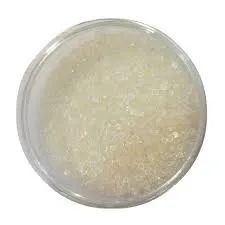Understanding Ammonium Thiocyanate Properties, Uses, and Safety
Ammonium thiocyanate, with the chemical formula NH4SCN, is an intriguing and versatile compound that plays a significant role in various chemical processes and applications. As a salt, it consists of ammonium cations (NH4+) and thiocyanate anions (SCN-). This article aims to explore the properties, applications, and safety considerations related to ammonium thiocyanate.
Chemical Properties
Ammonium thiocyanate is typically encountered as a white crystalline solid. It is highly soluble in water, which enhances its utility in various chemical reactions. The compound has a melting point of about 149 °C, and when heated, it decomposes into ammonia (NH3), sulfur, and carbon, making it an interesting subject of study in thermal chemistry.
One of the notable features of ammonium thiocyanate is its ability to form various complexes with metal ions. This property makes it valuable in analytical chemistry, particularly in the determination of metal ions in solution through methods like colorimetric analysis. The reaction of thiocyanate ions with certain metal ions results in the formation of colorful complexes, providing a visual means to gauge the concentration of the metal.
Applications
Ammonium thiocyanate finds use in several fields, ranging from agriculture to pharmaceuticals. One of its significant applications is in the agricultural sector as a nitrogen source in fertilizers. Plants require nitrogen for growth, and ammonium thiocyanate can serve as a valuable component for enriching soil, facilitating better crop yields.
ammonium thiocyanate

Moreover, in the pharmaceutical industry, ammonium thiocyanate has been investigated for its potential medicinal properties. Research indicates that it may possess antimicrobial and antifungal activities, making it a candidate for developing new medicinal formulations. However, the practical applications of ammonium thiocyanate in medicine are still being explored and require further validation through clinical studies.
In the realm of laboratories and chemical synthesis, ammonium thiocyanate is often used as a reagent in various chemical reactions. Its ability to participate in nucleophilic substitutions and coordinate with metal ions makes it useful for synthesizing a wide variety of compounds. Additionally, it is utilized in analytical procedures for detecting the presence of certain cations.
Safety Considerations
While ammonium thiocyanate is widely used across different industries, handling it comes with safety considerations. It is essential to note that the compound can be harmful if ingested or inhaled. It may cause irritation to the skin, eyes, and respiratory system. Therefore, it is recommended that individuals handling ammonium thiocyanate wear appropriate personal protective equipment (PPE), including gloves, goggles, and masks, to prevent exposure.
Environmental safety is also a concern with ammonium thiocyanate. The compound can be toxic to aquatic life if it enters water bodies in significant amounts. Hence, proper disposal practices should be followed to minimize its impact on the environment. Manufacturers and users alike should adhere to regulations regarding the handling and disposal of hazardous materials to ensure public safety and environmental protection.
Conclusion
In summary, ammonium thiocyanate is a compound with a unique blend of properties that make it beneficial for various applications. From agriculture to pharmaceuticals, its versatility is evident. However, with its potential risks, it is crucial to approach its use with caution and respect for safety guidelines. Ongoing research into its properties and applications will undoubtedly reveal new uses and benefits, cementing ammonium thiocyanate's place in both industrial and scientific domains. Whether viewed through the lens of chemistry or industry, ammonium thiocyanate remains a compelling subject worthy of further exploration.

